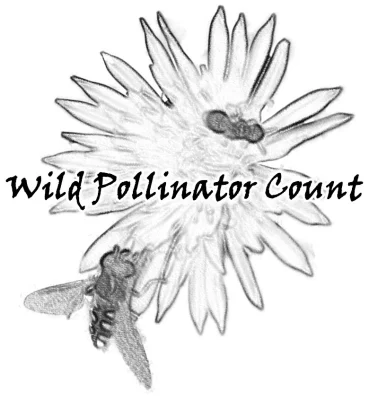A huge thank you to everyone who participated in the spring 2021 Wild Pollinator Count. It was the biggest response we’ve had to date, with over 3,500 count submissions. The weather was challenging in many parts of Australia during the count week in mid-November. We are grateful to everyone who undertook a count (or several) and to those who wanted to, but weather conditions thwarted their plans.
In all, those 3,500 submissions included 43,600 insects counted in our target categories!
We received more than 3,300 photos via email and our online form, more than 170 records were added to our iNaturalist project and many more of you shared images via social media. Thank you!
It was fantastic to receive submissions from right around Australia again in this round. The map below indicates each of the postcodes from which one or more submissions were received. The 883 unique postcodes include all states and territories.
Map of participating postcodes

Click to view as an interactive map
Here’s the summary of observations from the spring count, in the target categories:
| Category | Individuals counted | As % |
| BEES – European honey bees | 23,799 | 54.6% |
| BEES – Blue-banded bees | 855 | 2.0% |
| BEES – Other bees | 3,120 | 7.2% |
| BEETLES – Ladybird beetles | 749 | 1.7% |
| BEETLES – Other beetles | 2,283 | 5.2% |
| BUTTERFLIES and MOTHS | 2,165 | 5.0% |
| FLIES – Hover flies | 5,269 | 12.1% |
| FLIES – Other flies | 4,609 | 10.6% |
| WASPS – European wasps | 155 | 0.4% |
| WASPS – Other wasps | 603 | 1.4% |
An additional 3,173 observations were noted as ‘other’ and ‘unsure’ visitors seen during counts.
It has taken some time to work through the submissions. We’ve replied to most requests for assistance with identification and apologise to those we didn’t. Please be assured that if you submitted photos, we have used them to confirm or adjust your submission.
You can admire some of the terrific participant photos in this gallery, which include many of the commonly seen insects this round. You can also view the photos added to our iNaturalist project.
We are grateful to those who provided additional details or photos as part of their submissions (which are optional, but always appreciated). Our count categories are intentionally broad, so that using our identifications tips, you can be confident classifying what you see. We appreciate that many participants have knowledge beyond those categories and shared more specific breakdowns of species seen or other notes.
We acknowledge and thank CERES Environment Park in Melbourne for their promotion of this round of the count. Submissions via their cross-promotion made up more than two-thirds of all submissions received this count!
Thanks to everyone who promoted the count through their networks, on social media or by running a count event. We love that schools and students, gardening and land stewardship groups, scouts and workplaces join the count. It’s heartening to know there are so many people willing to get to know and contribute observations of these important insects.
As previously announced, we do not have any counts scheduled in 2022. We will be analysing and publishing the data from the counts to date, and reviewing the project, with the aim of making it even better.
We appreciate your feedback and suggestions for the count. We’re thrilled to have had your support and interest in the count, and your help in raising awareness towards the conservation of wild pollinator insects.
We look forward to letting you know what comes next, so please stay tuned.












